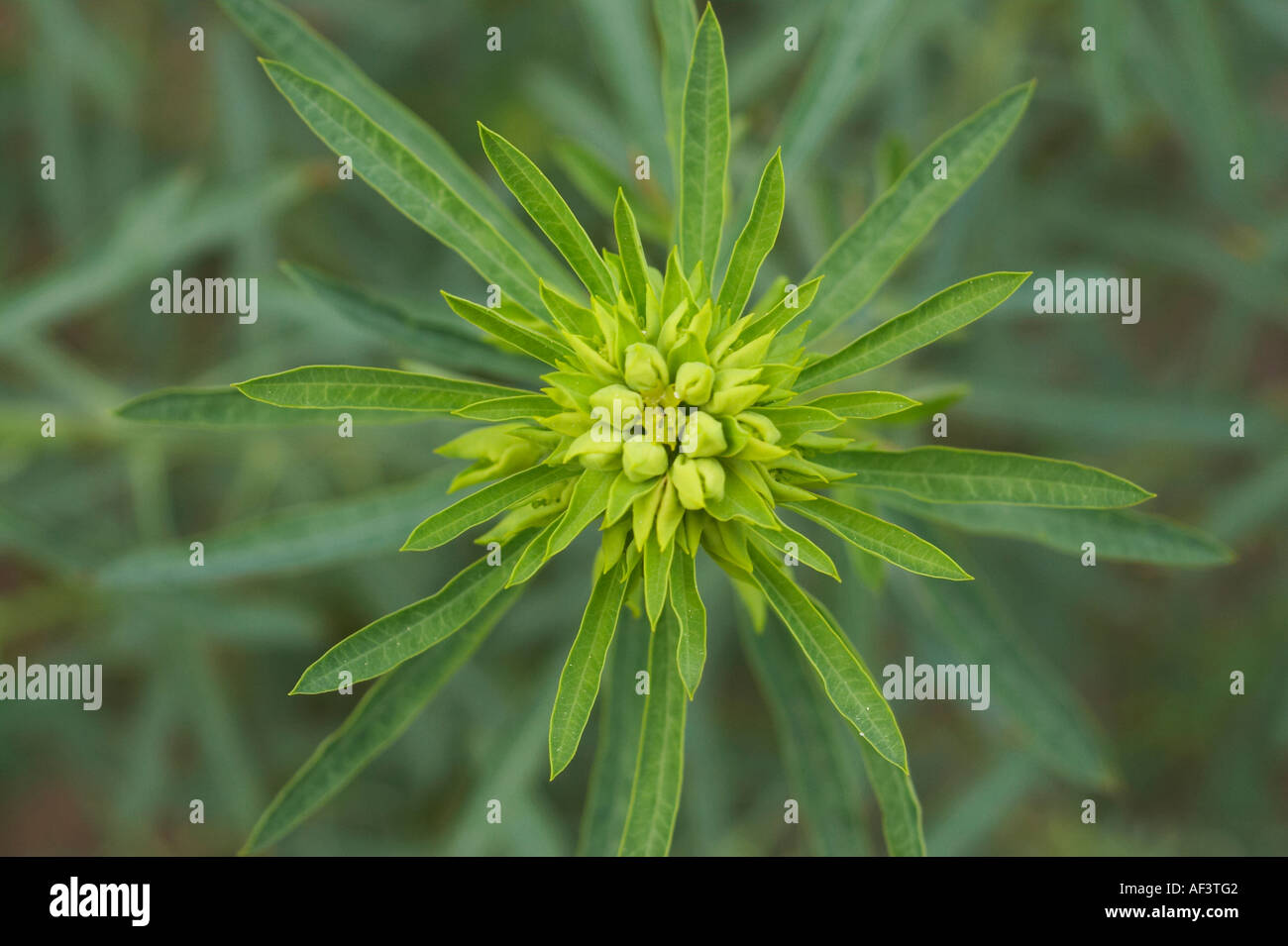Euphorbiaveae. Euphorbia esula. Leafy spurge. Wolf's Milk

Image details
Contributor:
Piotr & Irena Kolasa / Alamy Stock PhotoImage ID:
AF3TG2File size:
52.6 MB (1.3 MB Compressed download)Releases:
Model - no | Property - noDo I need a release?Dimensions:
5256 x 3498 px | 44.5 x 29.6 cm | 17.5 x 11.7 inches | 300dpiMore information:
Leafy Spurge (Euphorbia esula), also known as Wolf's Milk, or Wolf's-milk is a flowering plant found in North America, but native to Eurasia. It is classified as an invasive species by the United States Department of Agriculture. Leafy Spurge is a member of the spurge family, or Euphorbiaceae, characterized by plants containing a white milky sap and flower parts in threes. Leafy Spurge is an erect, branching, perennial herb 2 to 3½ feet tall, with smooth stems and showy yellow flower bracts. Stems frequently occur in clusters from a vertical root that can extend many feet underground. The leaves are small, oval to lance-shaped, somewhat frosted and slightly wavy along the margin. The flowers of Leafy Spurge are very small and are borne in greenish-yellow structures surrounded by yellow bracts. Clusters of these showy, yellow bracts open in late May or early June, while the actual flowers do not develop until mid-June. Leafy Spurge reproduces readily by seeds that have a high germination rate and may remain viable in the soil for at least seven years, enhancing its chances of recovery over time. Its seed capsules open explosively, dispersing seed up to 15 feet from the parent plant and may be carried further by water and wildlife. Leafy Spurge also spreads vegetatively at a rate of several feet per year. The root system is complex, it can reach 26 feet into the ground and 15 feet across, and may have numerous buds. Native to Europe and Asia, Leafy Spurge was transported to the U.S. possibly as a seed impurity in the early 1800s. First recorded from Massachusetts in 1827, Leafy Spurge spread quickly and reached North Dakota within about 80 years. Leafy Spurge displaces native vegetation in prairie habitats and fields through shading and by usurping available water and nutrients and through plant toxins that prevent the growth of other plants underneath it. Leafy Spurge is an aggressive invader and, once present, can completely overtake large areas of open land. Leafy